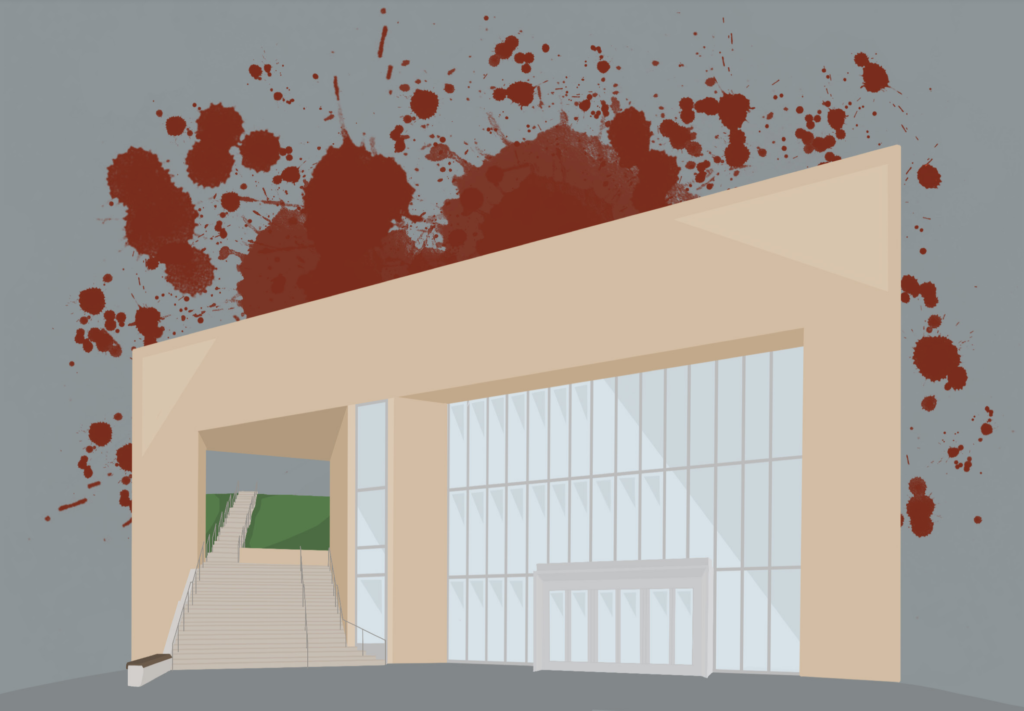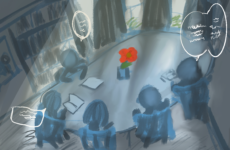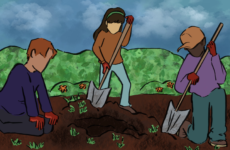
When I was little, the school I attended in Bogotá, Colombia offered standardized testing every year in November. I remember sitting in my seat, my feet barely touching the floor, as I wrote my name on the cover page of the test booklet and filled in other basic information.
I always dreaded reaching the question that asked about my race and ethnicity. I’m half Colombian and half American, but there is no clear way to indicate that on a form. Should I have bubbled in the circle that said I’m white? The instructions said I could only fill in one, but I also identified as Hispanic, which wasn’t an option under the racial identity question. This was a tough question for a nine-year-old to answer, but even to this day, I still grapple with the question of how to label myself.
So, when Choate began hosting the series of community conversations for different identity groups last year, I was relieved that communities at Choate would be able to discuss their experiences freely, allowing others to learn and grow from what was shared. However, when the Hispanic-Latinx community wasn’t given the opportunity for a conversation last spring due to scheduling issues, I felt outraged. Despite this incident, the first community conversation of this school year was announced to be “Everything You Wanted to Know, But Were Afraid to Ask About Hispanic-Latinx Identity.” And, this first conversation came with a major change to the format: it was to be held in-person at Colony Hall.
I was initially nervous about how the community conversation would go, since I didn’t know if students or faculty would be willing to get up in front of nearly one thousand people to share their personal experiences. However, I was pleasantly surprised that it worked as well as it did. Under this new format, Dr. Rachel Myers, Mr. Filipe Camarotti, and other faculty members stood in different sections of the auditorium and passed around microphones to people who wanted to speak. Students were randomly selected to draw anonymously-submitted questions from a bowl and announce them in the microphone. Unfortunately, I felt that too much time was spent selecting a student to read out the questions, taking away from the time spent on actually answering the questions.
And, while questions like “Can someone identify as Hispanic if they aren’t 100% Hispanic?” gave partially-Hispanic people like me a chance to express their uncertainty on their racial and ethnic identities without being judged, I wish the question had been phrased differently. In its current form, this question puts the community in a position to debate who should and shouldn’t be allowed to identify a certain way, opening up an opportunity for further exclusion — despite the obvious fact that a percentage is not a defining factor of someone’s identity.
While it’s key to acknowledge the questions that the community may have, the phrasing of some questions should have been edited to ensure that they were respectful. As another example, one question on the slideshow made an obvious stereotypical claim asking, “Is all Hispanic food spicy?” The phrasing of this question emphasizes negative stereotypes, causing more harm than support for the community it addresses. Going forward, a stricter review process of the questions would make the conversation more productive for both curious allies and students who are a part of the identity group.
Furthermore, through this review process, questions should be designed to give students space to share their experiences — not to educate. Rather than placing that burden on the shoulders of students who identify with these respective groups during community conversations, it is the School’s duty to educate us through class discussions, meetings, and other resources. I hope that community conversations can continue to exist as a platform for amplifying student voices — somewhere I can share the uncertainty of what to bubble in for my race and ethnicity on a test booklet.




